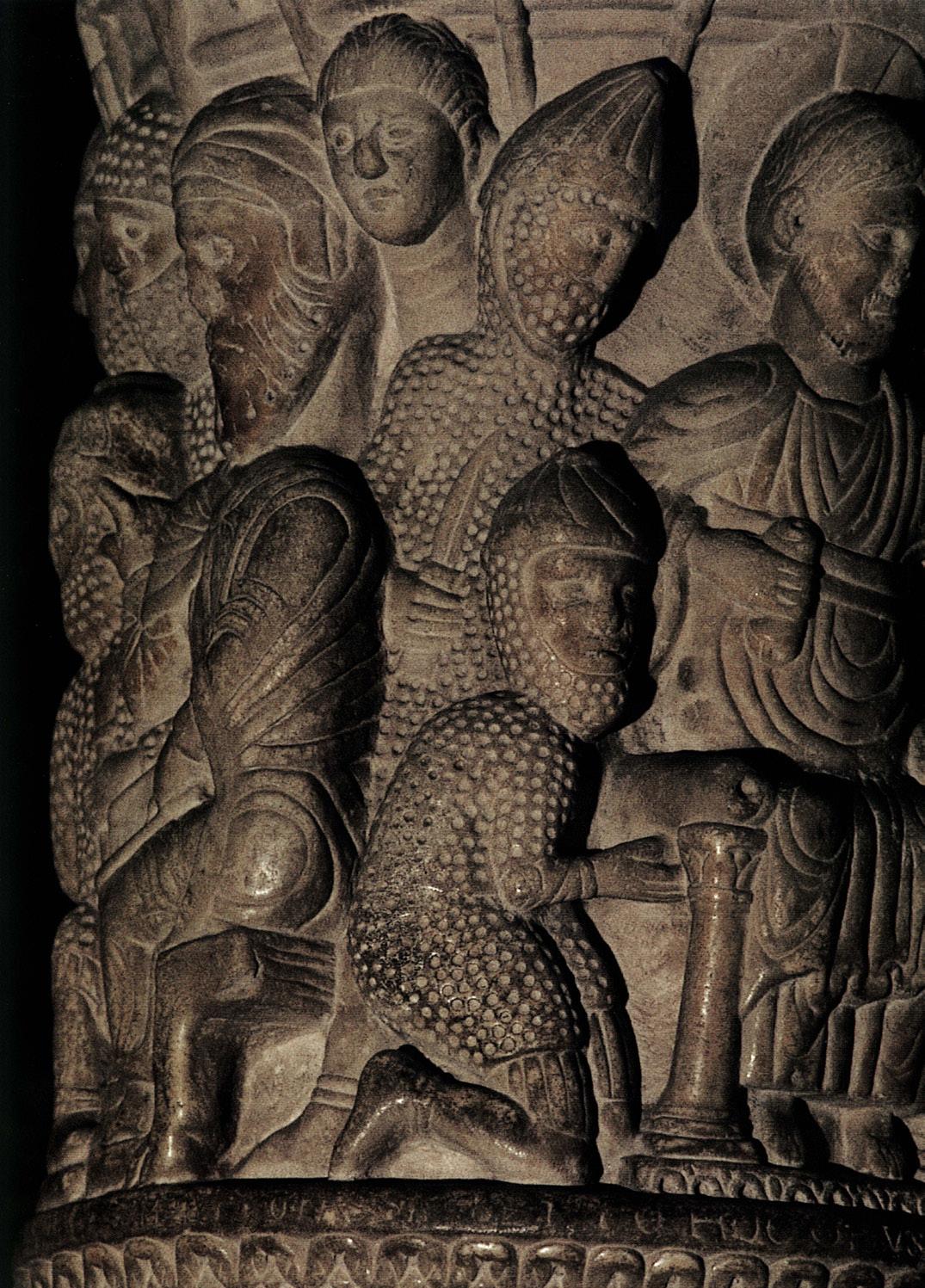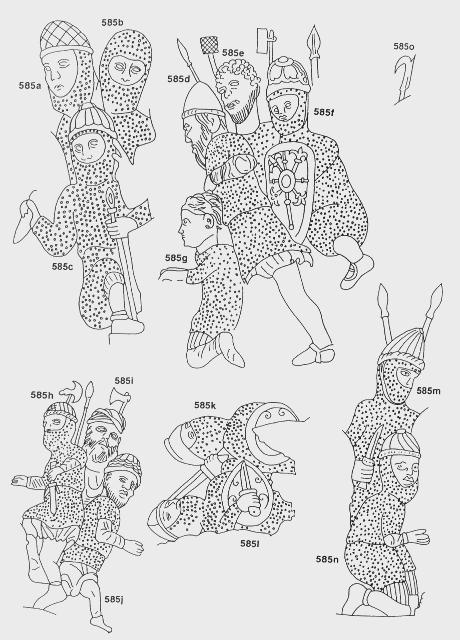
Try Amazon Audible Plus
Candlestick, San Paolo fuori la Mura, Rome, Italy, c.1170



'Guards of the High Priest' on a carved stone candlestick of c.1170, in the basilica of San Paolo fuori la Mura, Rome. Two wear fluted conical helmets, one clearly secured by a chin-strap, while the kneeling soldier may have a quilted gambeson beneath his mail hauberk.
(David Nicolle)
Source: pp.46-47, God's Warriors, Knights Templar, Saracens and the Battle for Jerusalem by Helen Nicholson & David Nicolle
Referenced on pp.221-222, Arms and Armour of the Crusading Era, 1050-1350, Western Europe and the Crusader States by David Nicolle
585A-O Carved stone candlestick made by Nicola d'Angelo and Pietro Vassalletto, Rome, c.1170
(in situ S. Paolo fuori le Mura, Rome, Italy)
A-J - Soldier of the High Priest; K-L - Sleeping Guards at the Holy Sepulchre; M-O - Soldiers of the High Priest. The basic equipment of the numerous warriors shown on this enormous stone candlestick reflects current usage in central and southern Italy. It consists of long sleeved (C, G, K and L) and short-sleeved (D, H, J and N) mail hauberks, most with integral coifs but some without. A few figures appear to wear padded gambersons beneath their mail (C, G and N) but his could just represent a pleated or creased garment. Shields are relatively small and kite-shaped (K and L), although one has a flattened top and a series of probably iron reinforcing straps across the front (F). The helmets are far more varied and may include some fanciful examples. The most ordinary has a forward-angled crown, is fluted, and is held by a chin-strap (M), but even this seems to have a cloth wound around its rim. Simple round or conical types are shown (A, D, H, J and L), though again some appear to be fluted and to have cloths wound around them. One helmet seen from an awkward angle (K) has a raised comb or ridge across it. This odd feature is also seen in Castile at around the same period. A final and more difficult helmet clearly has a button on top (C, F and N). Two are fluted and one seems to have an elaborate surface decoration or to be of segmented construction. These could be dismissed as fanciful except for the fact that exactly such an outline and associated system of construction was found in early medieval Turkish helmets from the Crimea and neighbouring regions. Perhaps such helmets were still used by the Turkish nomads or southern Russia, the Balkans or even Hungary and thus have entered the repertoire of exotic Ďaliení headgear worn by such figures as the High Priest's soldiers on a 12th-century Italian carving. The weaponry on this candlestick is simpler but is still very interesting. It consists of spears (C, D, F, H and M), a sword (K) and varied axes (F, H and I). A kind of mace may also be seen (E) as well as a hooked and spiked hafted weapon (O). Such hooked weapons seem to have been associated with Italians elsewhere, so it is interesting to note that they also appear in Italian sources. Three men are given daggers (H, L and M); the two that are out of their sheaths clearly having one straight and one curved side, presumably being single-edged. Daggers or knives are not normally shown as weapons in 12th-century Europe so their appearance here probably indicates a knowledge of the Islamic khanjar or possible Byzantine equivalent.
